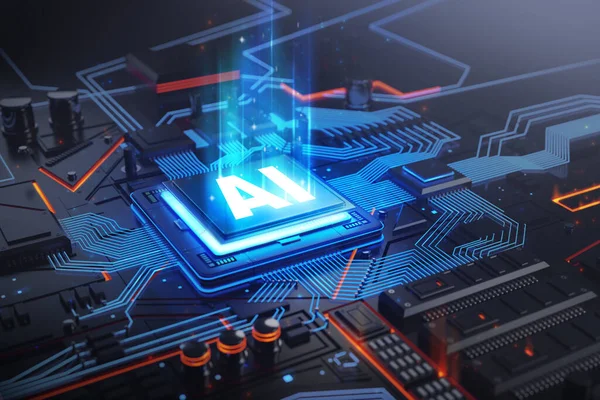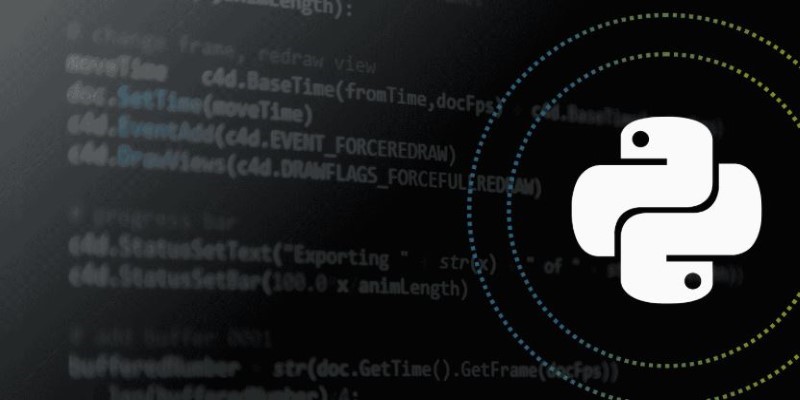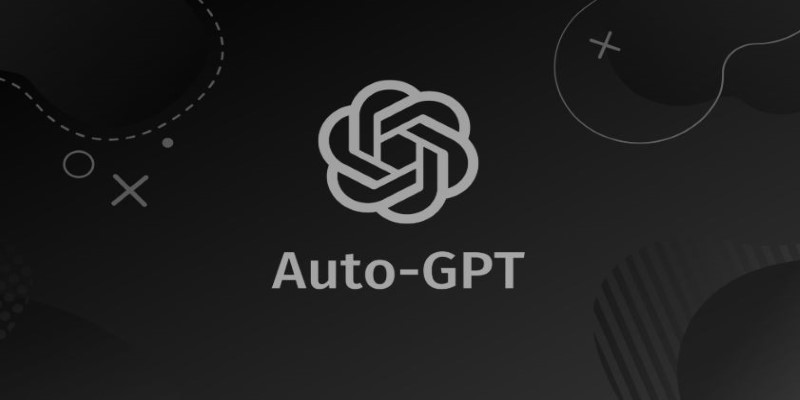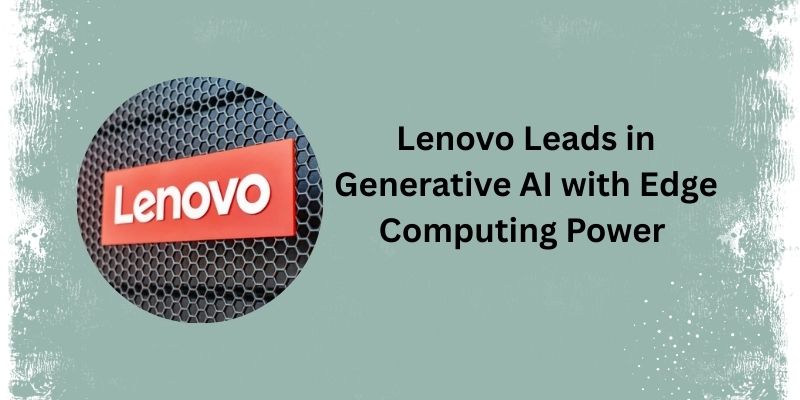Advertisement
We all know that generative AI has revolutionized the technology sector, and almost every brand is trying to position itself to win the race. Above all, the convergence of generative AI and edge computing is opening new doors of innovation. Lenovo is trying its best in this race of stepping into the market with the best technologies. With the advent of technologies, there is a real need to process real-time data across different industries. Traditional cloud-based AI solutions are no longer sufficient on their own. That's where edge AI comes in, bringing computing power closer to the data source.
Lenovo is changing how we think about artificial intelligence. It is emerging as something that lives in massive cloud data centers. It also acts as a tool to work right where the action happens. Lenovo is taking place in almost every sector, including hospital wards or retail checkouts. This will help every sector to make real-time decisions when every second counts.
The backbone of Lenovo’s technology is a bold “pocket-to-cloud” vision. The idea is simple but powerful. To bring smart computing to every level, including edge servers on-site, to even the cloud. It’s an approach that aims to make AI smarter and easier to use. It also quicker to respond, and ready to solve real problems wherever they happen. In this context, Lenovo isn’t just talking the talk. They’re backing this vision with serious investment in edge computing technologies. That means quicker insights, stronger data protection, and better results.

Lenovo is quickly growing its lineup of edge AI solutions to meet the rising need for smart decision-making in businesses. The most powerful innovation is ThinkEdge SE455 V3. It has a compact edge server that is designed specifically to handle demanding AI tasks right where the data is created. The special part is its AMD EPYC™ processors.
This powerhouse provides top-notch security, fast performance and flexibility. The SE455 V3 puts advanced AI right at the edge, which helps industries like manufacturing, logistics, and healthcare make split-second decisions. Lenovo offers TruScale for Edge and AI. It is a subscription-based, as-a-service model that allows businesses to use advanced technology without the need for large upfront investments.
By combining powerful hardware like the ThinkEdge SE455 V3 with the TruScale service model, Lenovo is creating a complete system for edge AI. These solutions are built to fit smoothly into different industries. It helps businesses process data on-site and rely less on distant cloud servers.
Lenovo’s partnership with NVIDIA has helped it advance in the technology race. The two companies have created some hybrid AI platforms by combining Lenovo's powerful hardware with NVIDIA's cutting-edge AI software.
One example is the ThinkSystem SR675 V3, which can support up to eight NVIDIA L40S GPUs. This makes it capable of handling advanced AI tasks like immersive ones that feel almost human. However, collaboration is not just limited to hardware. Lenovo has integrated NVIDIA’s AI Enterprise software and AI Blueprints into its ecosystem. This combination is very powerful. This will make it easier for businesses to deploy generative AI applications across different industries. Together, Lenovo and NVIDIA are ensuring that powerful AI is more than a concept but a practical reality.
Lenovo is helping cities to get smarter with the power of edge AI. Working with NVIDIA, they’ve developed technologies like VINA (Visual Insights Network for AI) and edge guarding. They are designed to make city systems faster and more efficient. These tools allow cities to process data on the spot. The data may include traffic flow, and energy use can be managed in real time.
A great example of this is in Spain. In Barcelona, Lenovo’s edge computing setup is helping to run traffic lights, monitor security cameras, and support emergency services. This system is successful because the data is processed locally, right where needed. This resulted in Quicker responses and smarter city management.
Lenovo’s focus on AI is not about building great hardware. Backed by a $1.2 billion investment in research and development, Lenovo has grown its AI business to over $2 billion. The company now offers a wide range of 71 AI-ready systems that fit different needs. These include ThinkSystem servers built for machine learning and ThinkEdge devices. Also, ThinkStation workstations are made to handle complex tasks like training advanced algorithms.
Moreover, Lenovo’s TruScale for Edge and AI gives businesses a more flexible way to access these powerful tools. With a pay-as-you-go model, companies don’t need to worry about huge costs. They can start small and adjust according to their needs as AI needs grow. It’s all about making AI more accessible and practical.

What sets Lenovo's edge AI strategy apart is the difference it's making in the real world. For example, hospitals can now analyze patient data and run diagnostics at the bedside. There is no need to send anything to the cloud. That means doctors can act faster and give patients better care when every second counts.
Lenovo’s edge AI solutions are quietly revolutionizing how stores run. Now you can expect smart cameras and sensors that monitor inventory. It can also understand what customers are looking for. It’s like giving your store a brain that thinks on the spot.
Lenovo is keeping up with the AI revolution. It's helping lead it, especially when bringing generative AI to the edge. Lenovo’s focus is on real-world challenges. Lenovo is making advanced AI technology more practical and more useful for everyone. With advanced edge hardware and strong collaborations like the one with NVIDIA, Lenovo is breaking down the barriers that have traditionally made AI difficult to implement. The company is helping organizations make faster and smarter decisions where and when they’re needed most.
As our world becomes increasingly connected, the ability to process information instantly and locally will become essential. Lenovo’s forward-thinking approach to edge AI prepares businesses for upcoming difficulties.
Advertisement

Discover simple ways to avoid overfitting in machine learning and build models that perform well on real, unseen data every time

How to use Python logging the right way. This guide covers setting up loggers, choosing levels, using handlers, and working with the logging module for better debugging and cleaner code tracking

Explore real vs. perceived risks of AI beyond fear-mongering and media hype in this balanced, insightful analysis.

Explore how generative AI transforms knowledge management with smarter search, automation, and personalised insights

What if your AI coding partner actually understood your project? See how Meta’s Code Llama 70B helps developers write smarter, cleaner, and more reliable code

Want to run Auto-GPT on Ubuntu without Docker? This step-by-step guide shows you how to install Python, clone the repo, add your API key, and get it running in minutes

Learn how to build a machine learning model in 7 easy steps, from defining the problem to deploying the model.

A venture capital firm announces funding initiatives to support early-stage startups building innovative AI tools.

Are you curious about how AI models can pick up new tasks with just a little training? Check out this beginner-friendly guide to learn how few-shot learning makes it possible.

Lenovo is transforming industries by bringing generative AI to the edge with powerful hardware and real-time solutions.

How can ChatGPT improve your blogging in 2025? Discover 10 ways to boost productivity, create SEO-friendly content, and streamline your blogging workflow with AI.

Discover how a steel producer uses AI to cut costs, improve quality, boost efficiency, and reduce downtime in manufacturing